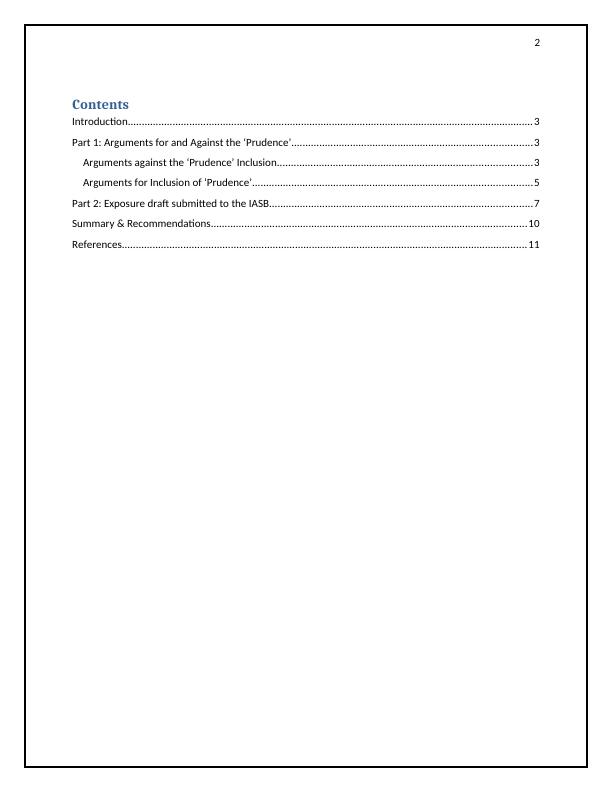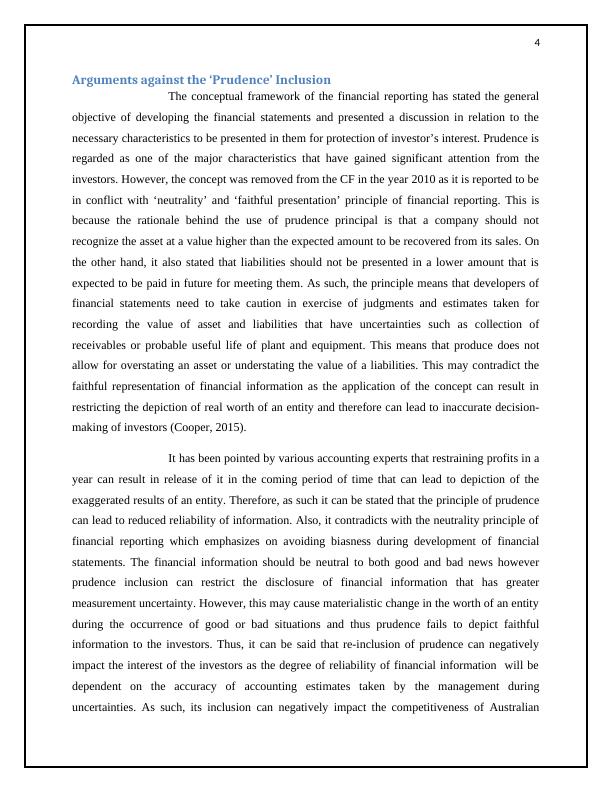Discussion Paper: Prudence
12 Pages2949 Words312 Views
Added on 2023-06-05
About This Document
The topic of prudence in financial reporting is a highly debated one, with arguments for and against its inclusion in the conceptual framework. The decision of whether or not to include prudence will have a direct impact on the financial reporting of Australian business entities and should be carefully considered by the IASB.
Discussion Paper: Prudence
Added on 2023-06-05
ShareRelated Documents
End of preview
Want to access all the pages? Upload your documents or become a member.
BAC304 Advanced Accounting Theory
|14
|3647
|432
Prudence and the New Conceptual Framework in Accounting
|15
|3646
|157
Critical Discussion on Prudence Concept and Conceptual Framework in Advance Accounting Theory
|15
|3535
|164
Inclusion or Exclusion of Prudence Concept in Conceptual Framework and IFRS
|5
|1730
|125
Debate on Inclusion or Exclusion of Prudence Concept in Accounting Conceptual Framework
|5
|1247
|192
Arguments for and against the inclusion of prudence in the conceptual framework
|6
|1490
|428




